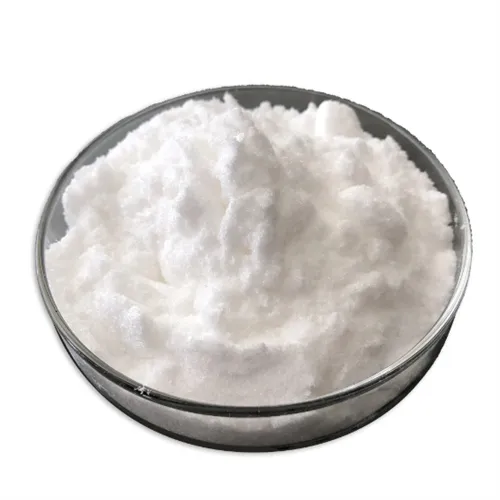Warning: Undefined array key "title" in /home/www/wwwroot/HTML/www.exportstart.com/wp-content/themes/1198/header.php on line 6
Warning: Undefined array key "file" in /home/www/wwwroot/HTML/www.exportstart.com/wp-content/themes/1198/header.php on line 7
Warning: Undefined array key "title" in /home/www/wwwroot/HTML/www.exportstart.com/wp-content/themes/1198/header.php on line 7
Warning: Undefined array key "title" in /home/www/wwwroot/HTML/www.exportstart.com/wp-content/themes/1198/header.php on line 7
- Afrikaans
- Albanian
- Amharic
- Arabic
- Armenian
- Azerbaijani
- Basque
- Belarusian
- Bengali
- Bosnian
- Bulgarian
- Catalan
- Cebuano
- China
- China (Taiwan)
- Corsican
- Croatian
- Czech
- Danish
- Dutch
- English
- Esperanto
- Estonian
- Finnish
- French
- Frisian
- Galician
- Georgian
- German
- Greek
- Gujarati
- Haitian Creole
- hausa
- hawaiian
- Hebrew
- Hindi
- Miao
- Hungarian
- Icelandic
- igbo
- Indonesian
- irish
- Italian
- Japanese
- Javanese
- Kannada
- kazakh
- Khmer
- Rwandese
- Korean
- Kurdish
- Kyrgyz
- Lao
- Latin
- Latvian
- Lithuanian
- Luxembourgish
- Macedonian
- Malgashi
- Malay
- Malayalam
- Maltese
- Maori
- Marathi
- Mongolian
- Myanmar
- Nepali
- Norwegian
- Norwegian
- Occitan
- Pashto
- Persian
- Polish
- Portuguese
- Punjabi
- Romanian
- Russian
- Samoan
- Scottish Gaelic
- Serbian
- Sesotho
- Shona
- Sindhi
- Sinhala
- Slovak
- Slovenian
- Somali
- Spanish
- Sundanese
- Swahili
- Swedish
- Tagalog
- Tajik
- Tamil
- Tatar
- Telugu
- Thai
- Turkish
- Turkmen
- Ukrainian
- Urdu
- Uighur
- Uzbek
- Vietnamese
- Welsh
- Bantu
- Yiddish
- Yoruba
- Zulu
Nov . 19, 2024 18:21 Back to list
propylene glycol antifreeze in food
Propylene Glycol Antifreeze in Food Safety and Uses
Propylene glycol, a synthetic organic compound, has garnered attention for its diverse applications across various industries, including food, pharmaceuticals, and cosmetics. It is a colorless, odorless, and tasteless liquid that is generally recognized as safe (GRAS) by the U.S. Food and Drug Administration (FDA). While the term antifreeze might raise concerns about safety, understanding propylene glycol's role in food products helps clarify its benefits and applications.
What is Propylene Glycol?
Propylene glycol, chemically known as 1,2-propanediol, is a viscous liquid that is hygroscopic, meaning it can absorb moisture from the air. It is produced through the hydration of propylene oxide, which is derived from petroleum. Due to its properties, propylene glycol is widely used as a food additive, solvent, and preservative.
Uses in the Food Industry
In the food industry, propylene glycol is primarily used as a humectant, a substance that helps retain moisture in food products. This quality is particularly beneficial in preserving the texture and shelf life of various items, including baked goods, dairy products, and certain beverages. Additionally, propylene glycol serves as a flavor carrier, enhancing the overall taste experience of processed foods.
One common use of propylene glycol in food is in salad dressings and sauces, where it prevents separation and maintains a uniform consistency. It is also utilized in frozen desserts, ensuring a smooth texture by inhibiting the formation of ice crystals. Moreover, propylene glycol can be found in numerous food products, including snack foods, candies, and marinades.
Safety Considerations
propylene glycol antifreeze in food

The safety of propylene glycol in food products has been extensively studied. Regulatory bodies like the FDA and the European Food Safety Authority (EFSA) have established acceptable daily intake (ADI) levels, which indicate the amount of a substance that can be safely consumed over a lifetime without adverse effects. For propylene glycol, studies suggest that consumption levels far below the established ADI do not pose health risks to the general population.
While propylene glycol is considered safe for most people, some individuals may experience sensitivities or allergic reactions, particularly if they have pre-existing conditions or allergies. It is also important to distinguish propylene glycol from ethylene glycol, a toxic compound often used in automotive antifreeze. Ethylene glycol is not safe for consumption and should never be used in food applications.
Controversies and Public Perception
Despite its safety profile, the inclusion of propylene glycol in food products has led to debates regarding the presence of additives in the modern diet. Some consumers prefer to avoid synthetic substances in favor of natural alternatives. As a result, many food manufacturers are now offering clean label products that prioritize minimal processing and the absence of artificial ingredients. This trend reflects a growing demand for transparency in food sourcing and ingredient lists.
To address consumer concerns, it is essential for food manufacturers to provide clear information about the role of propylene glycol in their products. Educating consumers about the differences between various chemicals and their safety records can help demystify the use of additives like propylene glycol in food.
Conclusion
Propylene glycol is a versatile compound that plays a crucial role in the food industry, primarily as a humectant and flavor carrier. While its use may spark concern among some consumers, scientific evidence supports its safety when consumed within established limits. As the food landscape evolves, ongoing education about additives and transparency in labeling will remain paramount in accommodating consumer preferences and ensuring food safety. By understanding the role of propylene glycol, consumers can make informed choices that align with their dietary preferences while appreciating the benefits this compound brings to the culinary world.
Latest news
-
Certifications for Vegetarian and Xanthan Gum Vegetarian
NewsJun.17,2025
-
Sustainability Trends Reshaping the SLES N70 Market
NewsJun.17,2025
-
Propylene Glycol Use in Vaccines: Balancing Function and Perception
NewsJun.17,2025
-
Petroleum Jelly in Skincare: Balancing Benefits and Backlash
NewsJun.17,2025
-
Energy Price Volatility and Ripple Effect on Caprolactam Markets
NewsJun.17,2025
-
Spectroscopic Techniques for Adipic Acid Molecular Weight
NewsJun.17,2025

